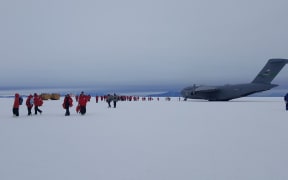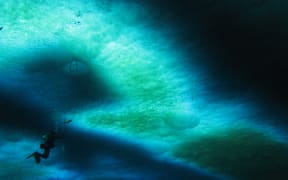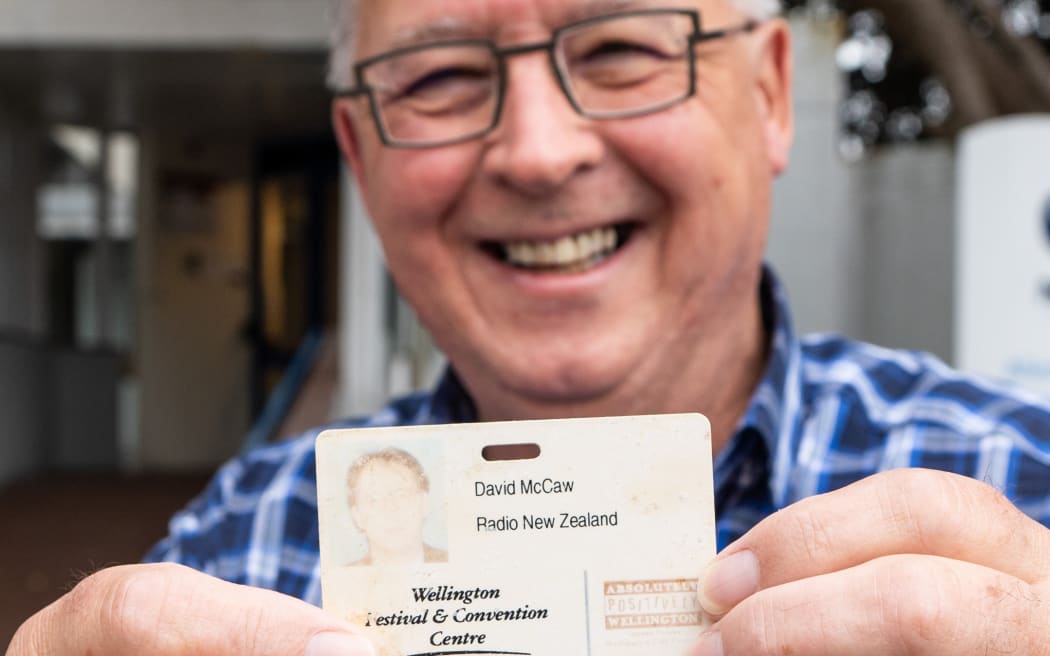
RNZ Concert senior music producer David McCaw with his returned ID card. Photo: NIWA / Rebekah Parsons-King
You've heard of finding a needle in a haystack, but what about finding a swipe card in the vast expanse of the world's oceans?
RNZ Concert senior music producer David McCaw is as baffled as he is elated to be reunited with his long-lost security card, 21 years after losing it.
"I was just absolutely flabbergasted, just floored. It was so unexpected and so bizarre that I've never quite got my head around it."
He picked it up from NIWA's headquarters in Wellington two weeks ago, and one way or another, it has clocked thousands of kilometres.
The story starts in 2003, when David McCaw lost the card which gave him access to the Wellington Town Hall and Michael Fowler Centre after his car was broken into.
"My briefcase was sitting in the passenger [foot]well of the car...so obviously someone saw it and broke the window and took the briefcase," he said.
A few days later the police returned the briefcase where the swipe card had been stored, but it was empty and sopping wet.
Have you made a miraculous discovery or a remarkable find yourself? Share your stories and pictures with us at iwitness@rnz.co.nz
"I got a call about three days later saying, 'we've got your briefcase, come and get it.' They said someone had handed it in. They said someone had recovered it from the harbour, I don't know exactly where, and it had seawater and the remaining documents were soggy."
Fast forward to 2016, and about 20 kilometres north of Scott Base, in Antarctica, NIWA diver Rod Budd was working with researchers on the sea floor at Cape Evans.
"I was diving with a colleague of mine, and we were laying out some transects, which are basically just measuring tapes. I saw what I thought was a credit card, but it was a little too dark to tell so I just picked it up and put it in my pocket. It was unusual because you don't usually see rubbish and things down there," he said.
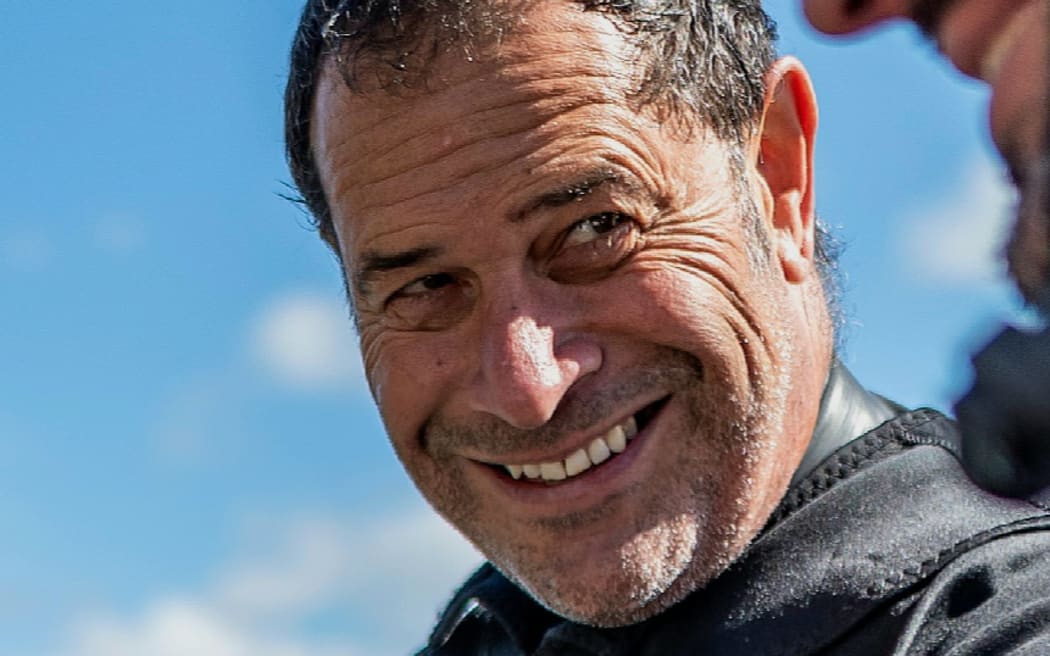
NIWA diver Rod Budd. Photo: Dave Allen
Rod Budd has made 150 dives at Cape Evans, and he has only come across a handful of items that do not belong there.
He said it took a clean of the card to notice it was worth keeping.
"It wasn't till I got back to the surface, and I cleaned it up and I could see that it was a Radio New Zealand security card. I could quite clearly see David's name printed on it. I showed it to the rest of the team, and we thought we should send it back to him sometime."
On their return to New Zealand, the team never got around to tracking down McCaw, so the swipe card sat in a box for eight years.
Last year when NIWA did finally find him, they were shocked to discover he had never travelled to Antarctica.
The mystery deepens
So how did the card end up under two metres of ice, at the bottom of the ocean, on the coast of Antarctica, 4,000 kilometres away from where it was lost?
Hitching a ride with ocean currents sounds like a logical explanation, but NIWA principal scientist Craig Stevens said the chances of that were "infinitesimally small".
He has mapped out the card's potential journey after sinking below the canyons off Wellington's harbour.
After entering the Western Boundary Current, the card would pass Samoa and head towards the North Pacific.
"And then, if by some miracle you start to be less 'sinky,' you work your way to the surface through wind mixing and some other stuff," he said.
Then the card would be flushed through Indonesia, crossing the world's largest ocean current, the Antarctic Circumpolar Current, before reaching Cape Evans.
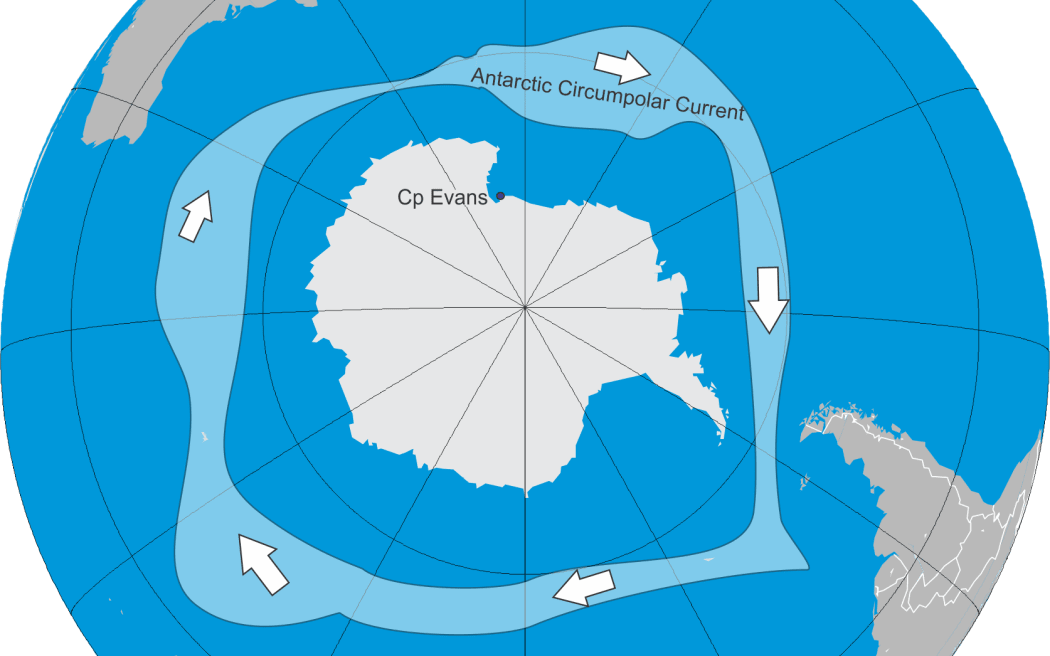
The Antarctic Circumpolar Current. Photo: NIWA
"The time scale for that is about a thousand years."
Floating theory
Craig Stevens said it was more likely the card somehow became attached to something buoyant, and stayed at the surface where currents are much quicker and less predictable - but even then, it would have to travel round the globe multiple times before landing in the Antarctic.
"Strange things do happen," he said.
"There are forms of biology that can crust on something and then become bouyant."
But he said that was still an ambitious guess for the 13 year timeframe.
"That's sort of short for traveling across the planet in the ocean... if it had been blown South, I bet it would've gone around the world a few times before it actually ended up in this 30 metre radius spot beneath an observation hole in Antarctica."
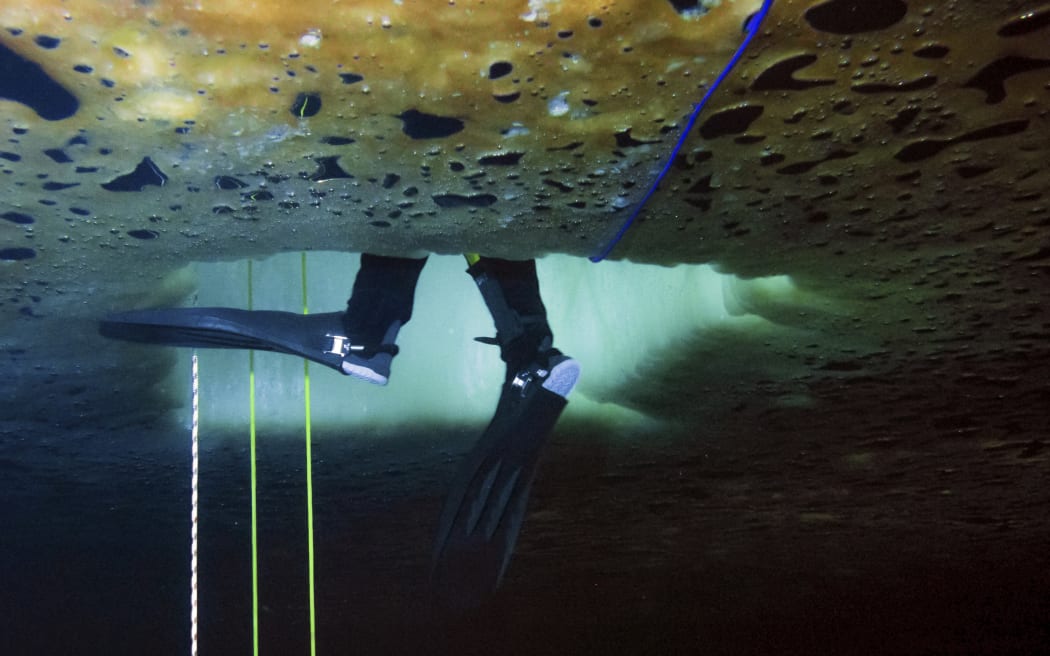
A diver going through a dive hole at Cape Evans, Antarctica Photo: Peter Marriott
Those odds lend themselves to the other main possibility that the card came with a visitor, be it a human or otherwise, to the dive hole or nearby sites.
The mystery remains unsolved, but David McCaw says a concrete explanation would be music to his ears.
"I would dearly love to know. It would be very satisfying to close the circle on this."
